About
Visit
Museum
Photos
Video
News
Events
Roof and Building Improvement Project - click on Announcements
thru Dec. 19 - noon choirs sing on weekdays



STATEHOUSE NEWS

2012 GREAT OHIOANS CHOSEN
Six Individuals Chosen to be Part of Special Statehouse Museum Exhibit
April 19, 2012
The Capitol Square Review and Advisory Board and the Capitol Square Foundation today announced the 2012 Great Ohioans. The 2012 honorees were presented by the Capitol Square Foundation and unanimously approved by the full membership of the Capitol Square Review and Advisory Board earlier today. The six honorees were selected from nominations submitted by individuals and organizations throughout Ohio.
The 2012 Great Ohioans include: Gordon Battelle, philanthropist and researcher, Dominic Salavtore “Don” Gentile, World War II fighter pilot, Piqua; Washington Gladden, clergyman and social reformer, Columbus; Albert Belmont Graham, founder of the 4-H program, Lena; Albert Sabin, medical researcher best known for the oral polio vaccine, Cincinnati; and William T. Sherman, Civil War general, Lancaster.
For detailed information about each honoree, see the biographies below.
High resolution images of each of the winners are available at: http://www.ohiostatehouse.org/Multimedia/MediaLibrary/Collection.aspx?start=1&collectionId=107895.
“This year’s class of Great Ohioans recognizes six remarkable individuals who have made pre-eminent contributions to Ohio and the nation,” said Senator Richard Finan, Chairman of the Capitol Square Review and Advisory Board. The Great Ohioan Award commemorates special Ohioans who have played a significant role in an event or series of events of lasting significance in World, American or Ohio history. To be selected for the Great Ohioan Award, the nominee must have resided in Ohio for a minimum of five years. In addition, at least 25 years must have passed since the event in which the nominee participated is being commemorated.
Since 2003, 24 other Great Ohioans have been recognized with the award for the special roles they played in history. The Great Ohioans include:
2003 Class: Orville and Wilbur Wright, inventors of powered flight; John Glenn, first American to orbit the earth; and Neil Armstrong, first man to walk on the moon;
2008 Class: Jesse Owens, Olympic track and field star; Thomas Edison, inventor; Harriet Beecher Stowe, author; James Thurber, journalist and author; Colonel Charles Young, military leader; Dr. George Crile, founder of the Cleveland Clinic;
2009 Class: Catherine Nelson Black, health care humanitarian; Salmon P. Chase, Ohio Governor, Secretary of the Treasury and Supreme Court Chief Justice; Paul Laurence Dunbar, poet and author; Charles F. Kettering, inventor; Eddie Rickenbacker, World War I fighter ace; Denton T. “Cy” Young, baseball legend;
2010 Class: James M. Cox (Dayton), journalist, member of the United States House of Representatives, Ohio Governor; Florence Ellinwood Allen (Waite Hill), first woman Ohio Supreme Court Justice; Bob Feller (Gates Mills), baseball legend; and Bill Willis (Columbus), National Football League hall of famer.
2011 Class: Ulysses S. Grant, Civil War General and U.S. President; William Moore McCulloch, Speaker of the Ohio House of Representatives, U.S. Congressman and civil rights advocate; William Howard Taft, U.S. President and U.S. Supreme Court Chief Justice; and Harriet Taylor Upton, women’s rights advocate and author.
“Each Great Ohioan has created a legacy that will be passed on to others. We hope that every Statehouse visitor is inspired by the accomplishments of each one of the great men and women who we have recognized with this honor,” said Charles Moses, Chairman of the Capitol Square Foundation.
Great Ohioan honorees and their achievements are chronicled in a permanent Great Ohioan exhibit, which is part of the Ohio Statehouse Museum. The Great Ohioans exhibit presents recipients of the Great Ohioan award on a large touch monitor. A host of options are available to visitors to explore the life and accomplishments of each recipient.
While countless Ohioans have performed great actions for their community and beyond, only a select few have been named a “Great Ohioan.” This exhibit allows visitors to have a greater understanding of the recipients of the Great Ohioan award and discover how they affected local, national and world history. The exhibit uses videos, photos, facts and web based technology to explore the life and legacy of each Great Ohioan.
Opened in 2009, the Ohio Statehouse Museum features high-tech, interactive exhibits that make learning about all three branches of state government fun. The museum is packed with historical artifacts and images that tell the stories of how government works and who has come to serve their fellow citizens.
The Museum includes 5,000 square feet of exhibit space on the ground floor of the Ohio Statehouse that enriches the experience of school children and visitors. The Museum offers exhibits that encourage visitors to participate in the government process by making choices, expressing their opinions, comparing viewpoints and even becoming a part of an exhibit by giving a State of the State address. A thrust on contemporary issues enables visitors to better relate to the governing process.
All citizens, especially teachers and students, are encouraged to participate in the nomination process to select the 2013 class of honorees. A complete explanation of the nomination process and nomination forms can be found online at www.capitolsquarefoundation.org.
To view this press release and others, visit www.ohiostatehouse.org.
The Ohio Statehouse is more than a monument to our past; it's where history happens! The Ohio Statehouse is open weekdays from 7 a.m. to 6 p.m.; weekends from 11 a.m. to 5 p.m.; closed holidays. The Ohio Statehouse Museum is open weekdays from 9 a.m. to 5 p.m.; weekends from noon to 4 p.m.; closed holidays. Admission is free. Free guided tours are offered weekdays on the hour from 10 a.m. to 3 p.m., and weekends from noon to 3 p.m. Tours depart from the Map Room easily accessible from the Third Street entrance. Groups of 10 or more are requested to call in advance to ensure a guide is available. Contact 888/OHIO-123 for more information or to schedule a group tour. For more information about the Ohio Statehouse visit www.ohiostatehouse.org.
The Ohio Statehouse is handicapped accessible and senior friendly. The Capitol Square complex was restored to allow for greater access by individuals living with disabilities. Ohio Statehouse public programs and events are held in accessible and barrier free areas of the building so that everyone can participate. Ohio Statehouse visitors needing disability-related accommodations in order to fully participate in an event may contact the Capitol Square Review and Advisory Board at statehouse@csrab.state.oh.us or 614/752-9777 to communicate special needs. Please allow three weeks for arrangements to be completed.
About the Capitol Square Review and Advisory Board
The Capitol Square Review and Advisory Board is responsible for maintaining the historic character of the Statehouse and Capitol Square while providing for the health, safety and convenience of those who work in or visit the complex. The Ohio Statehouse Museum Education Center coordinates tours of Capitol Square and provides information about the buildings, their history and Ohio's government.
The Ohio Statehouse shines a light on the history of this great edifice, its symbolic meaning and its vital historic and ongoing connections to the daily lives of all Ohioans.
About the Capitol Square Foundation
The Capitol Square Foundation was established in 1987 to increase public awareness of and to involve citizens in the history of the Ohio Statehouse. Its purpose is to raise funds to obtain, restore and maintain artifacts and other items related to the history and enhancement of the grand monument and its adjoining grounds, so that the seat of Ohio's government may reflect the dignity of the state and its citizens.
BIOGRAPHIES OF THE 2012 GREAT OHIOAN AWARD WINNERS
GORDON BATTELLE
Gordon Battelle spent his childhood in Piqua, Ohio where his father John Gordon Battelle, controlled the Piqua Rolling Mill Company and the Cincinnati Corrugating Company. Gordon later attended military school and Yale, where he studied metallurgy. In 1905 the Battelle family moved to Columbus where John became a partner in the Columbus Iron and Steel Company.
Gordon was a serious man who wanted to leave his own mark on the world. After working for his father for a couple of years he moved to Joplin Missouri where he and George Waring worked to extract zinced from mine tailings. Gordon set up a lab for Waring that was used to create a process for creating ammonia-zinc sulphate salt that they received a patent for. Because of this work the idea of an industrial research laboratory fascinated Gordon at a time when few research laboratories existed.
In 1923, Gordon died after an appendectomy leaving the bulk of his estate to create the “Battelle Memorial Institute” to be established:…for the purpose of education in connection with and the encouragement of creative and research work and the making of discoveries and inventions… His mother, Annie Norton Battelle who passed away in 1925 must be viewed as a co-founder of the Institute, as her estate more than doubled the Institute’s funding.
The organization Gordon’s vision created, the Battelle Memorial Institute (BMI), started doing research in late 1929. The first seven BMI employees included two women - Thelma Reinberg the first head of the Battelle research Library, and Dr. Marjorie Benoy, head of analytical chemistry. Today BMI is a 501 (c) (3) operating out of Columbus Ohio with 22,000 employees in more than 130 locations worldwide.
DOMINIC S. GENTILE, aka Don Gentile
Ohioan Dominic (Don) Salvatore Gentile, U.S. Army Air Force, shot down more enemy planes in World War II than any other pilot from Ohio and was the first to break Eddie Rickenbacker's World War I record of 26 downed aircraft.
Born on December 6, 1920, in Piqua, Ohio, Gentile learned to fly while still in high school. With World War II raging in Europe, he enlisted in the British Royal Air Force in 1941, serving in the 133 Eagle Squadron. In 1942, the 133 Eagle Squadron became the 4th Fighter Group in the United States of America's Army Air Force (AAF). At this time, Gentile was promoted to Second Lieutenant.
By April 1944, Gentile emerged as the AAF's leading fighter pilot, having shot down 27.88 enemy planes, although the AAF credited him with only 21.88 air victories and six ground kills. Fearing that Gentile, an American hero, would be shot down, the AAF refused to let him fly into combat following April 1944. After a one-month leave, the AAF reassigned him to Wright Field, in Dayton, Ohio, where he served as a test pilot. Eventually other pilots surpassed his kill total, unseating Gentile as the leading ace of World War II. In 1942, Gentile received the Distinguished Flying Cross for his exemplary record. When General Dwight D. Eisenhower presented Gentile with the award, the general referred to the pilot as, "One man Air Force."
In 1947, Gentile became a captain in the U.S. Air Force. He continued to serve as a test pilot. On January 23, 1951, Gentile died in a training crash at Andrews Air Force Base in Maryland at the age of 31. The U.S. Air Force posthumously appointed him to the rank of major.
Gentile illustrates the important role that Ohioans have played in aviation. With such important names as the Wright Brothers, John Glenn, Neil Armstrong, and numerous others, Ohioans have been at the forefront of aviation history.
WASHINGTON GLADDEN
Washington Gladden was a prominent minister, local politician and social reformer in late-nineteenth-century and early-twentieth-century Ohio.
Gladden was born in 1836 in Pennsylvania. He spent most of his youth in Owego, New York, before attending Williams College. Upon graduation, Gladden was ordained as a Congregational minister. He ministered to several churches in Massachusetts and New York, before becoming pastor of the First Congregational Church in Columbus, Ohio, in 1882. Under his leadership, this church's congregation grew from 558 members in 1885 to 1,214 people by 1914.
Gladden was a firm believer in the social gospel. He believed that all Christians must dedicate themselves to the mission of Jesus Christ. They must fight corruption and greed. They must also do all in their power to help their fellow men and women. Numerous people during the late nineteenth and early twentieth centuries held these beliefs. They became known as Progressives, and Gladden was one of the most prominent ones in Ohio during the late 1800s and the early 1900s.
Upon arriving in Columbus, Gladden was shocked by the corrupt government officials and flagrant disregard for law and order. Especially distressing for Gladden was the local government's failure to enforce a law requiring saloons to remain closed on Sundays. He firmly believed that people should spend Sundays celebrating God and not drinking. To improve the community, Gladden won election to the Columbus City Council. He served from 1900 to 1902. While he had hoped to instill moral values in government officials as well as local residents, Gladden was consumed with more mundane issues. He helped secure reduced streetcar fares. He also helped Columbus assume control over a local electric plant. He, however, was unable to enact temperance laws, to enforce Sunday blue laws, and to assist laborers in obtaining better working conditions. Gladden chose not to run for reelection after his term in office.
Gladden remained active in public life following his time as a councilman. He encouraged his parishioners to become active in their community and to put pressure on politicians to follow the will of the people instead of just the desires of wealthy industrialists. He lobbied his followers to battle selfishness in themselves and in others. Unfortunately, like most followers of the Progressive Movement, Gladden was intolerant of others. He called for equal rights and opportunities for African Americans with white people, but at the same time, he believed that blacks were naturally inferior to whites. Gladden also believed immigrants, especially Catholic immigrants, were lazy and prone to alcoholism. At the same time, it is important to remember that Gladden and most other Progressives, despite some major shortcomings, sought to improve life in the United States by ending the greed of business owners, eradicating corruption in government, and by assisting their fellow men and women. Gladden died in 1918 and is buried in Columbus’ Green Lawn Cemetery.
ALBERT B. GRAHAM
Albert B. Graham was born in Champaign County, Ohio, on March 13, 1868, the son of Joseph A. and Esther P. Graham. He and his sister, Lettie, were raised on a small farm near the village of Lena located in Champaign County. He attended grade school in Champaign County at Carmony School. In February of 1879, a fire destroyed the Graham home and his father was fatally burned. The family (Albert, his sister Lettie, and their mother Esther) moved into a new home shortly afterwards in Lena, Ohio.
Mr. Graham graduated from Lena-Conover High School in Miami County, Ohio, in 1885. He then graduated from the National Normal School in Lebanon, Ohio in 1888, with a Bachelor of Science degree. He then attended the Ohio State University from 1889-90.
In 1890 A.B. Graham married Maud Keyte Lauer from and together they raised a family of four children. From 1890 to 1896, Mr. Graham was a teacher at several schools in Miami, Shelby, and Champaign counties in Ohio.
From 1896 to 1900 he was the teacher/principal at Terre Haute School, and the superintendent of Southern Mad River Township, all of which were in Champaign County, Ohio.
In 1900, Mr. Graham became Superintendent of schools in Springfield Township, in Clark County. While there, his time was given entirely to studying the problems of rural teachers and elementary boys and girls.
In 1902 he made an effort to organize some of the pupils into an agricultural club that was called a Boys’ and Girls’ Agriculture Experiment Club. The first meeting of the club was January 15, 1902.
To secure memberships, Mr. Graham made trips to the district schools and presented the club plan directly to the boys and girls. As a result of teacher and parent approval, voluntary memberships of children from 10 to 15 years of age were secured. Before the growing season had begun, 85 children had signified their willingness to participate.
It was decided that club meetings would be held monthly. In order that the work of the club members could be separated from the school authorities, a meeting place in the basement of the Clark County Court House was secured from the county commissioners. Saturday afternoon was chosen as the time for monthly meetings. Parents brought the members to the meetings when they came to the city for shopping or to visit markets.
The boys’ and girls’ club organized by Mr. Graham did home plat work with corn, potatoes, and garden crops. Collections of weeds and weed seeds were made. Soils were tested for acidity, and bird studies and nature observations were carried on. Exhibits of corn and other products were made at farmers’ institutes.
In 1903 this work was made cooperative with the Ohio State University. In June of 1903, Mr. Graham took 100 club members and parents to visit The Ohio State University in Columbus.
As early as 1904, Mr. Graham, speaking of rural education, stated in his annual school report for that year that, “Not only must provision be made for the three R’s but for the three H’s as well”:
The head for wealth of information and knowledge,
The heart for moral and spiritual strength, and
The hand for manual dexterity and skill.
Because of his work in the development of agricultural clubs in rural schools and his broad outlook on agriculture, he was made superintendent of Agriculture Extension at the Ohio State University, July 1, 1905.
Likewise, in the “History of The Ohio State University,” by Thomas C. Mendenhall, it is related that when Mr. Graham assumed his duties as superintendent of extension in Ohio in 1905 he formulated an Extension program as follows:
1. To elevate the standard of living in rural communities.
2. To emphasize the importance of hard work and habits of industry, which are essential in building a strong character.
3. To acquaint boys and girls with their environment and to interest them in making their own investigations.
4. To give to the boys who will become interested in farm work an elementary knowledge of agriculture and farm practices, and to give girls the simplest facts of domestic economy.
5. To cultivate a taste for the beautiful in nature.
6. To inspire young men and women to further their education in the science of agriculture or domestic science
7. To educate the adult in the elementary science of agriculture and in the most up-to-date farm practices.
As Superintendent of Extension at the Ohio State University, Mr. Graham traveled widely over the State. He published a bulletin on centralized schools in Ohio in 1906 and he was a member of the committee that drafted plans for junior high schools in the United States in 1907. He published a bulletin on the country schools of Ohio in 1910.
He was a prolific writer of Extension bulletins on various phases of agriculture, nature study, and rural life. He promoted the consolidation of rural schools in Ohio and helped to develop the farmers’ institutes and fairs of the State.
In 1914 Mr. Graham resigned his work in Ohio and took up Extension work with the New York State School of Agriculture at Farmingdale, N.Y. Here he remained a little more than a year, resigning in 1915 to become a member of the staff on the United States Department of Agriculture in Washington, D.C.
In 1919 Mr. Graham was placed in charge of the subject-matter section of the Federal Extension Service and continued in that work up to the time of his retirement. A. B. Graham retired from the Federal Extension Service, March 31, 1938. For more than 35 years Mr. Graham was engaged in various phases of agricultural extension works.
From 1938 to 1960, Mr. Graham lived as a retired educator in Columbus, Ohio. He resided in the suburb of Clintonville with his wife, Maude. Over the years, Mr. Graham attended many national and state 4-H events and activities - including the 4-H Golden Anniversary (50-Year) activities held in Springfield, Ohio, in 1952.
He continued to receive volumes of written correspondence years after the Golden Anniversary of 4-H and actively responded to inquiries sent to him until shortly before he died. On January 14, 1960, Mr. Graham passed away in Columbus, Ohio, and is buried in Fletcher Cemetery in Miami County, Ohio.
ALBERT SABIN
Dr. Albert Sabin is recognized as the developer of the oral, live virus polio vaccine.
Born in Poland in 1906, Sabin and his family fled to the United States in 1921 to escape anti-Semitism. He attended New York University and graduated with a medical degree. From 1935 to 1939, he worked at the Rockefeller Institute for Medical Research. In 1939, Sabin accepted a position at Cincinnati Children's Hospital, in Cincinnati, Ohio. Sabin remained at this hospital until 1969. He remained active in the medical field for the next two decades, serving as president of the Weizmann Institute of Science, a consultant for the U.S. National Cancer Institute, a Distinguished Research Professor of Biomedicine at the Medical University of South Carolina, and a consultant at the Fogarty International Center for Advanced Studies in the Health Sciences of the National Institutes of Health, at various points during this period.
Sabin conducted research into numerous viruses and diseases, including pneumonia, cancer, encephalitis, and numerous other illnesses. His most important work involved poliomyelitis. During the late 1940s and 1950s, Sabin tried to determine how the polio virus infected its victims. He determined that the virus infected a person through his or her digestive tract. Further research led Sabin to realize that some people had resistant antibodies in their blood to polio, suggesting that they had been infected with a weak strain of the virus that had left them resistant to more powerful versions of the illness. Sabin immediately began to seek out weaker strains of the virus, believing that he could produce a vaccine with the live virus that would protect people from stronger versions of polio.
By 1957, Sabin had developed a live vaccine. Jonas Salk had produced a “killed” vaccine for polio a few years previous to Sabin's discovery. The problems with Salk's vaccine were twofold. First, it did protect people from contracting polio, but it did not prevent them from infecting others with the virus. Second, Salk's vaccine had to be administered through shots. Sabin's live vaccine eliminated the possibility that someone could remain immune from polio but still transmit the virus. Patients also took the vaccine orally, since it entered the system through the digestive tract. An oral vaccine made distribution of the vaccine much easier.
In 1957, the World Health Organization permitted Sabin to test his vaccine in Chile, Holland, Japan, Mexico, Russia, and Sweden. It was not until 1960 that the U.S. Public Health Service allowed Sabin to distribute his vaccine to Americans. By this point in time, more than eighty million people, mostly children, had taken the vaccine. Thanks to Sabin's discovery, polio in the United States is virtually eradicated. The last case to occur in the United States contracted from the virus happened in 1979. Outbreaks continue to occur in poorer countries, where people are less likely to have access to the vaccine.
Sabin died in 1993; he is buried in Arlington National Cemetery.
WILLIAM T. SHERMAN
William Tecumseh Sherman was a prominent nineteenth-century military leader from Ohio.
William T. Sherman was born on February 8, 1820, in Lancaster, Ohio. His younger brother was John Sherman who later became a United States Senator. He was named after Tecumseh, the famous Shawnee leader. Sherman's father died in 1829. Sherman's mother could not take care of all of her children and had several of them adopted into other families. Thomas Ewing, a neighbor and close family friend, raised William Sherman as a foster son.
Sherman attended common schools and received an appointment to the United States Military Academy at West Point in 1836. He graduated in 1840, ranking sixth in a class of forty-two students. He was commissioned a second lieutenant of artillery. He participated in the Seminole War from 1840 to 1842. During the late 1840s, he was stationed in California and helped Californians secure their independence from Mexico in the Mexican War. By 1850, he was in St. Louis, Missouri, and then New Orleans, Louisiana, on commissary duty. In 1850, he married Eleanor Boyle "Ellen" Ewing, the daughter of Thomas Ewing of Lancaster. The couple had eight children and a thirty-eight year marriage. Sherman resigned his commission with the rank of captain in 1853.
After leaving the military, Sherman moved to San Francisco, California, and became the manager of a banking firm. The company made some unsound investments and lost most of their investors' money. Sherman refunded all of the money that his investors lost from his own savings. In 1857, he joined a bank in St. Louis, Missouri. It failed as well, and Sherman began to practice law in Leavenworth, Kansas.
In 1859, Sherman became the superintendent of the Louisiana Military Academy. He also served as a professor of engineering, architecture, and drawing. At the beginning of the American Civil War in 1861 Louisiana's seceded from the Union. Sherman resigned his position and returned to the North. In May 1861, he joined the Union army and was immediately commissioned a brigadier-general of volunteers. He commanded the Third Brigade, First Division, of the Army of Northeastern Virginia at the First Battle of Bull Run in July 1861. His men suffered numerous casualties in the battle. He was transferred to the Department of the Cumberland in August 1861, and Sherman assumed command of that department in October of that year. In this position, Sherman played a vital role in securing Kentucky for the Union.
In the first year of the war, Sherman was highly critical of the Union war effort. He believed that an army of volunteers could not successfully prosecute the war. He argued that a massive army of seasoned veterans was necessary for the North to triumph. Sherman was outspoken in his opinions and was reassigned to inspection duty at St. Louis, Missouri, in December 1861. In February and March 1862, he was responsible for shipping supplies to General Ulysses S. Grant's army. Grant was working to secure western Tennessee for the Union. Sherman developed a close friendship with Grant. Grant selected Sherman to organize the Fifth Division of the Army of the Tennessee. This division fought hard at the Battle of Shiloh in April 1862, and Sherman received two minor wounds. Grant gave Sherman credit for the Northern victory at this battle and Sherman was promoted to the rank of major general of volunteers in May 1862.
During the remainder of 1862 and the first seven months of 1863, Sherman participated in the campaign against Vicksburg, Mississippi. He performed well and was promoted to the rank of brigadier-general in the regular army in July 1863. In the fall of 1863, Sherman assumed command of the Army of the Tennessee and helped win the Union a victory at the Battle of Chattanooga. He pursued a Southern force into East Tennessee after Chattanooga, and he succeeded in driving the Confederates from the region. During the first few months of 1864, Sherman was stationed at Vicksburg and led raids into Mississippi. He attempted to cut railroad lines, but he met with limited success.
In March 1864, Sherman assumed command of the Military Division of the Mississippi. His command included all of the soldiers operating west of the Allegheny Mountains and east of the Mississippi River. He amassed 100,000 men at Nashville. His intention was to defeat General Joseph E. Johnston's Confederate army. After battles at Kennesaw Mountain, Peach Tree Creek, and a number of other places along the way, Sherman's force entered Atlanta, Georgia in early September 1864. Sherman had used a variety of tactics to avoid direct military confrontations with the Southerners during this campaign. He repeatedly used flanking maneuvers to prevent his army from having to attack well-fortified Confederate positions.
Following the fall of Atlanta, Sherman set out on a "March to the Sea." He determined to break the will of the Southern population between Atlanta and Savannah, Georgia. Sherman left his wagon train behind and ordered his men to feed themselves with what they could find along the way. The Northerners even requisitioned food from the slave population. Sherman realized that the civilian population was supplying the Confederate military with food and other supplies. He decided that one way to win the war was to break the will of the civilian population and to end its ability and desire to equip an army. He left Atlanta on November 15, 1864, and traveled the more than two hundred miles to Savannah by December 21. He faced little resistance from the Confederate military. In 1865, Sherman led his army into the Carolinas, using the same tactics that he had used on the "March to the Sea." General Joseph E. Johnston surrendered at Durham Station, North Carolina, on April 26, 1865 and the Civil War soon came to an end.
Sherman remained in the military following the Civil War, serving first as the commander of the Military Division of the Mississippi and then commander of the Military Division of the Missouri. When Ulysses S. Grant became President of the United States in 1869, Sherman replaced him as General of the United States Army. He retired on November 1, 1883, and was succeeded by General Philip Sheridan. Sherman moved to New York City in 1886. He died on February 14, 1891, and was buried in St. Louis, Missouri.
Biographical information courtesy of Battelle, Ohio History Central and Ohio 4-H.
# # #
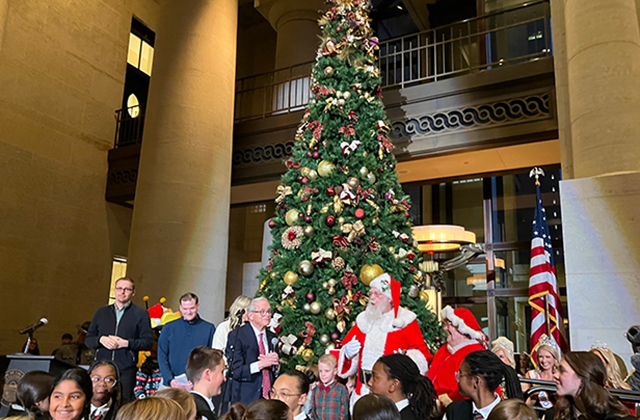 Holiday Festival and Tree Lighting 2025
Holiday Festival and Tree Lighting 2025 Holiday Santa Photos 2025
Holiday Santa Photos 2025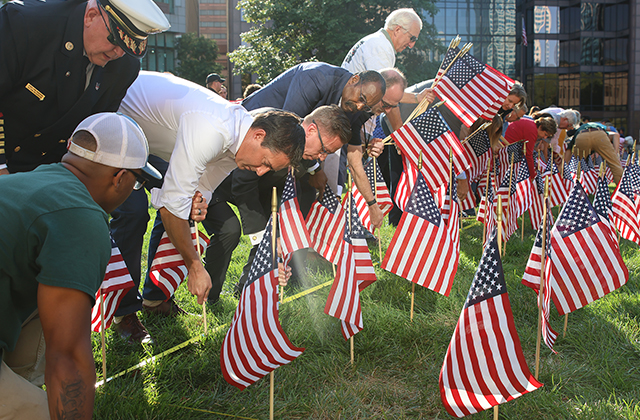 Flags for 9-11 in 2025
Flags for 9-11 in 2025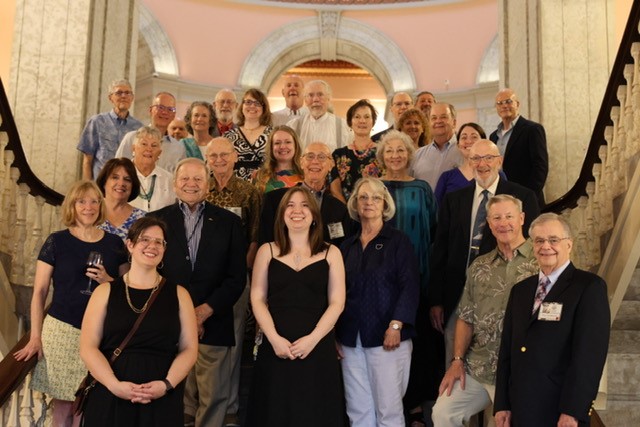 2025 Volunteer Appreciation Dinner
2025 Volunteer Appreciation Dinner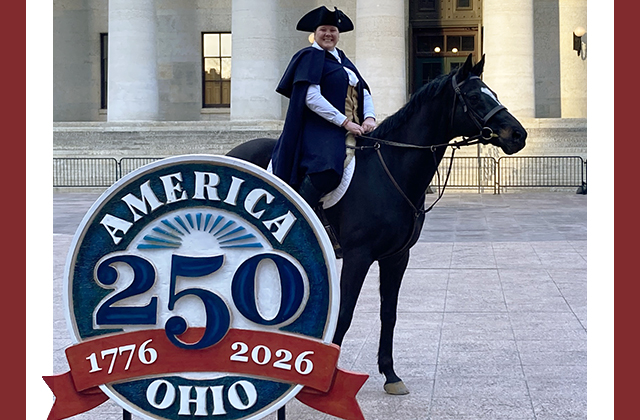 America 250-Ohio
America 250-Ohio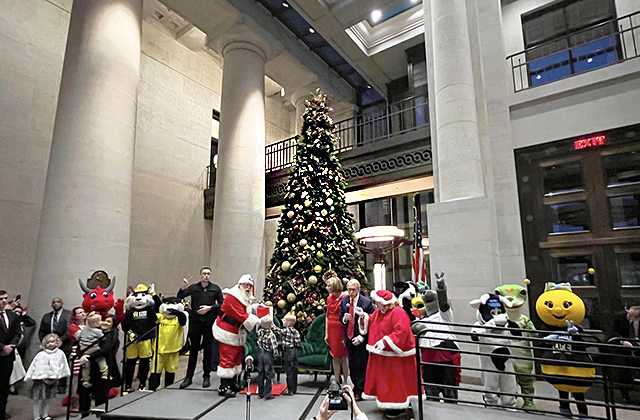 Holiday Festival and Tree Lighting 2024
Holiday Festival and Tree Lighting 2024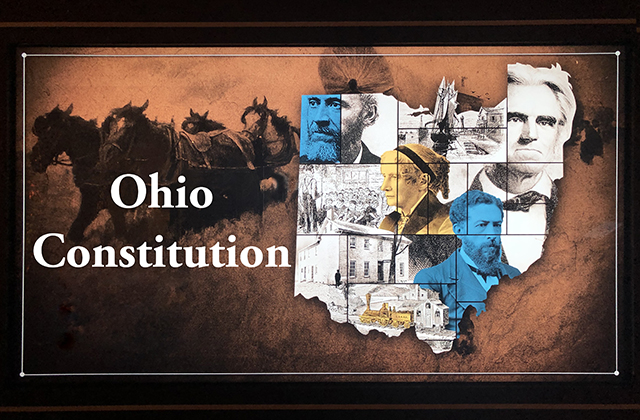 Ohio Constitution Videos
Ohio Constitution Videos Ohio Statehouse Videos
Ohio Statehouse Videos






